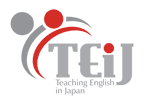Health Care: The Difference Between U.S. and Japan
Moving to Japan can be a startling experience for many US citizens, especially when they deal with the health care system. Despite the high cost of living throughout this island nation, the Japanese health care system provides much more comprehensive coverage for its citizens. Here's what you need to know about healthcare in Japan and how to navigate the system.
Universal Healthcare
The Japanese system provides care for all citizens, with few appointment requirements and a relatively low cost. Basic appointments cost about $20, even without insurance - about what your co-pay with insurance would be in the US. Generally speaking, patients accept responsibility for about 30 percent of the costs of treatment, with the government taking care of the other 70 percent.
Everyone participates in a universal insurance system, the fees of which are set by government committees. Most people get access to this insurance through work, but those who don't have the option through their employers can participate in a separate national health insurance program run by their local government.
Visitor qualifications
If you are a non-citizen who is living in Japan, you can subscribe to the national health insurance program if you have stayed in the country for at least a year and have a Certificate of Alien Registration. You cannot subscribe to NHI if you already receive health insurance through an employer, are on public assistance or are a temporary traveler to the country. Older people - those over 70 - can receive a long life medical care card from their town or city. This entitles them to a separate insurance system with only a 10 to 30 percent co-pay.
Applying for NHI
You start or renew an NHI membership whenever you stop using another type of insurance or move from one local area to another. To apply, you need a change of address certificate, Certificate of Alien Registration, and a hanko, or personal name stamp. You may also be asked to prove that you are no longer insured by your employer or a US insurance company. You will have to pay a premium for your care. If you don't pay on time, your card may be revoked and you may lose eligibility for some or all medical services.
For the average Japanese family, this costs about $280 per month, with premiums varying according to the number of people in the family. When you get insurance through your workplace, the employer takes care of about half of your premium. If you do not receive insurance through your employer, you will have to pay the full amount yourself. If your insurer has money left over from the previous year, it is not put towards profit. Instead, the money is applied to premiums for the current year and you pay less for your insurance.
Covered Services
In general, you'll find that the Japanese healthcare system covers more services with fewer hoops to jump through than the American one. For instance, basic preventive services, including dental care, are readily available. Most people can get appointments with a specialist without having to go through a general practitioner. Services like blood tests and magnetic imaging scans are relatively inexpensive and easy to get, as well. In the US, you'd pay $1,200 for an MRI neck scan. In Japan, you'll pay about $100.
Sources and further reading:
http://www.livescience.com/7830-healthcare-systems-japan.html
http://www.npr.org/templates/story/story.php?storyId=89626309
http://reallycheaphealthinsurance.com/category/state-health-insurance/

